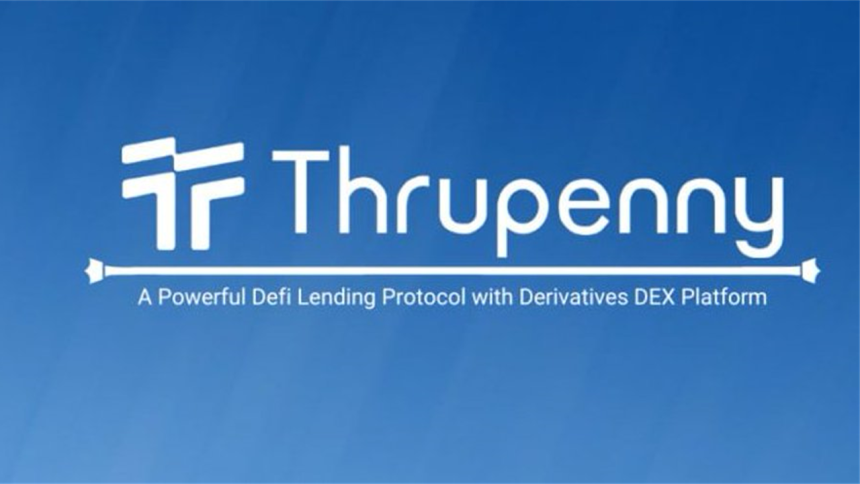Reason to trust

How Our News is Made
Strict editorial policy that focuses on accuracy, relevance, and impartiality
Ad discliamer
Morbi pretium leo et nisl aliquam mollis. Quisque arcu lorem, ultricies quis pellentesque nec, ullamcorper eu odio.
Decentralized Finance (DeFi) and tokenization are two of the hottest trends in the world of finance today. Over the past few years, these technologies have been rapidly reshaping the traditional finance sector, enabling new and innovative ways of transacting, investing, and raising funds. In this article, we will explore how DeFi and tokenization are reshaping finance, with a focus on recent developments and key statistics in the space.
DeFi and Tokenization: What Are They?
DeFi refers to a new paradigm in finance that is built on blockchain technology. It is a decentralized ecosystem of financial applications and protocols that operate without intermediaries, such as banks or other financial institutions. DeFi allows for the creation of digital financial instruments, such as stablecoins, lending protocols, and insurance products, that can be accessed by anyone with an internet connection. It enables users to earn interest on their digital assets, take out loans without the need for collateral, and trade assets without the need for a centralized exchange.
Tokenization, on the other hand, refers to the process of converting real-world assets, such as stocks, real estate, or commodities, into digital tokens that can be traded on blockchain networks. Tokenization allows for the fractional ownership of assets, which makes it easier for investors to diversify their portfolios and access previously illiquid markets. Tokenization also enables the automation of asset management processes, such as dividend distribution and voting rights.
Recent Developments in DeFi and Tokenization
The DeFi and tokenization space has seen explosive growth over the past year, with new projects and protocols launching almost daily. Some recent developments in the space include:
Growth of the DeFi market
The total value locked (TVL) in DeFi protocols has exceeded $100 billion, according to data from DeFi Pulse. This represents a significant increase from just $1 billion in TVL in mid-2020.
This growth has been fueled by a number of factors, including the rise of decentralized exchanges (DEXs) and the increasing popularity of yield farming, which involves users providing liquidity to DeFi protocols in exchange for rewards.
Stablecoins, which are digital tokens pegged to the value of a real-world asset, such as the US dollar, have become a cornerstone of the DeFi ecosystem. The market capitalization of stablecoins has grown from less than $5 billion in early 2020 to over $100 billion today.
Institutional adoption of DeFi
DeFi is no longer just a space for individual investors and traders. Institutional investors are beginning to recognize the potential of DeFi, with major firms such as Goldman Sachs, JPMorgan, and BNY Mellon exploring the space. In addition, decentralized finance is starting to receive more attention from regulatory bodies, with the US Securities and Exchange Commission (SEC) recently announcing that it would be taking a closer look at the DeFi market.
Tokenization of assets
Tokenization is the process of creating digital tokens that represent real-world assets such as property, art, or even stocks. This process can bring many benefits, including increased liquidity, fractional ownership, and lower transaction costs. One example of tokenization in action is the recent sale of a Beeple NFT for $69 million, which represented a digital artwork. In addition, companies such as Robinhood and Coinbase have announced plans to tokenize traditional assets such as stocks and bonds, bringing them onto blockchain networks.
Real-world use cases
DeFi and tokenization are not just theoretical concepts – they are being used in the real world to solve real problems. One example is the use of DeFi protocols to provide financial services to individuals who do not have access to traditional banking services. In addition, tokenization is being used to enable easier and more secure trading of commodities such as gold and silver, which can be difficult to trade using traditional methods.
Thrupenny’s Contribution to the DeFi Ecosystem
Thrupenny is a DeFi project that has made significant contributions to the DeFi ecosystem. Thrupenny aims to create a decentralized ecosystem that enables users to access financial services in a trustless, permissionless, and accessible manner. Thrupenny is built on the Ethereum blockchain, and it leverages smart contracts to automate financial transactions and services.
Thrupenny has made several contributions to the DeFi ecosystem. Firstly, Thrupenny has introduced several new financial products and services that were not previously available in the traditional financial system or CeFi platforms. These include liquidity pools, decentralized exchanges, lending, and borrowing protocols, and yield farming mechanisms. These new products and services have enabled users to earn higher returns on their assets, access new markets and opportunities, and participate in a more open and inclusive financial system.
Secondly, Thrupenny has implemented several innovative features that improve the efficiency and effectiveness of the DeFi ecosystem. For example, Thrupenny has developed a unique liquidity mining mechanism that rewards users for providing liquidity to the platform. This mechanism incentivizes users to participate in the platform and helps to ensure that there is sufficient liquidity for transactions and services.
Thirdly, Thrupenny has focused on improving the accessibility and usability of DeFi platforms. Thrupenny has developed a user-friendly interface that makes it easy for users to access and navigate the platform. Additionally, Thrupenny has implemented several security measures to ensure that user assets are protected and that the platform is secure from hacking and cyber-attacks.
Overall, Thrupenny has made significant contributions to the DeFi ecosystem by introducing new financial products and services, implementing innovative features, and improving the accessibility and usability of DeFi platforms. These contributions have helped to create a more open, inclusive, and efficient financial system that benefits all users.
The Benefits of DeFi and Tokenization
DeFi and tokenization offer several benefits over traditional finance, which makes them attractive to users and investors alike. For starters, DeFi and tokenization enable faster and cheaper transactions, which significantly reduces transaction fees and increases transaction speed. Additionally, these systems are more transparent, as all transactions are recorded on a public blockchain, which means that users can easily track their transactions and assets.
Furthermore, DeFi and tokenization allow for greater financial inclusion, as anyone with an internet connection can access these platforms, regardless of their location or financial status. This makes it possible for individuals and communities that were previously excluded from traditional finance to access financial services and opportunities.
The Future of DeFi and Tokenization
Decentralized Finance (DeFi) has emerged as a revolutionary force in the financial industry. When traditional banks narrowly avoided a systemic bank run, and centralized exchanges (CEX) collapsed spectacularly, DeFi kept working, providing trustless financial services to people around the globe.
Success, however, brought with it bad actors and illicit financial transactions that troubled regulators worldwide. An unusually successful algorithmic stablecoin soared and then collapsed, whipping out billions in dollars of capital and the loss of retail enthusiasm. Hackers stole nearly $4 billion by exploiting crypto protocols in 2022 alone (with North Korea as the prominent perpetrator).
These problems have kept most traditional financial institutions out of DeFi, which is detrimental to the long-term growth and adoption of crypto. In the depth of crypto winter, the industry must find a solution to spark the next cycle and bring mass adoption.
Thrupenny believes the solution to this is called the “Internet financial system,” or IFS, which combines the best of DeFi and traditional finance (TradFi) in one unified network.
The IFS will be built on open crypto rails and preserve the blockchain’s most important attributes such as decentralized settlement, self-custody, transparency, and composability. The goal is to connect crypto to TradFi to unlock trillions of assets that are currently trapped in these siloed financial systems and bring in more users. However, the IFS must also address regulatory concerns while preserving user privacy.
The IFS must adopt programmable on-chain compliance to handle ongoing anti-money laundering (AML) checks and differentiate between different laws by national origin. The long-term success of the IFS hinges on regulatory acceptance, which requires engaging in good faith with regulators and showing them solutions to illicit finance problems.
Privacy-preserving identity is also essential in the IFS to ensure compliance does not come at the expense of user privacy. Smart contracts must not intake or expose personal data on an immutable blockchain. Standards for privacy-preserving identity credentials have been developed and are ready for prime-time in the IFS.
The IFS represents a collective effort that requires the best and brightest minds from various disciplines to make compromises, break new ground, and deliver the future of finance. The IFS will enable new use cases, make finance more robust and accessible, and benefit from cheaper and faster remittances. With the right approach, the IFS can deliver on DeFi’s original promises and lead to a new era in finance.



























